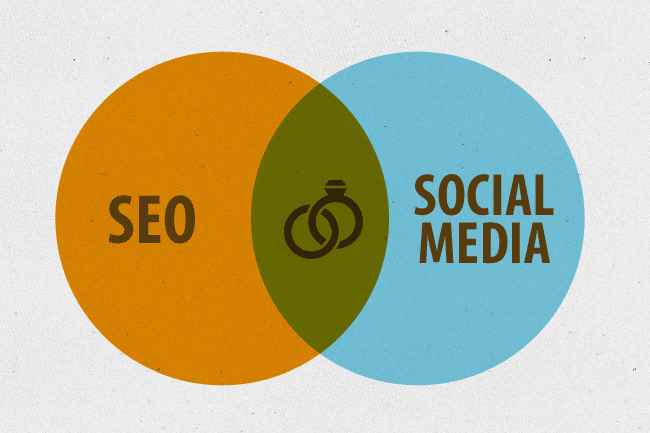Everybody wants to have their website appear first in the search results. This article will share tried and tested strategies for improving or boosting your SEO in less time.
Before diving into the elements to boost your SEO, let’s first understand what SEO is and how it works!
“SEO” stands for “Search Engine Optimization.” SEO is an approach used to increase the visibility and positioning of your website pages in the search results. SEO plays a significant role in surging organic visitors to a website.
A solid SEO strategy is necessary to increase both the quality and volume of visitors to the website because organic search is the most popular method for users to find and access online content
Let’s talk about how to develop the best SEO strategy plan possible so that your content ranks highly in organic searches. These strategies are tested by professional SEO services agencies and experts.
What is an SEO strategy plan?
The thing about SEO is that you can’t set it once and forget it. SEO is always a continuous activity, so you must plan your SEO according to the market trend. The SEO strategy plan aims to organize and implement corrective actions that will improve the website’s organic search engine ranking.
In other words, an SEO strategy is a procedure you use to increase organic traffic to your website.
Making an SEO strategy plan is essential if you are a business owner, SEO agency, or marketer and want to build long-term brand awareness, increase your target audience, and increase your revenue.
Some benefits of making an SEO strategy plan.
It Gives You A Competitive Advantage
To continue to be competitive in your industry, you can analyze your competitors using a solid SEO strategy plan and keep up with them or even get ahead of them. If you do your SEO correctly, you can quickly outperform your competition in search engine results and increase your market share.
It will boost your content marketing.
With the help of a solid SEO strategy, you can improve the quality of your content and optimize it for the keywords you want to rank for.
You can avoid paying for inorganic traffic.
Google’s algorithm is solely responsible for determining the ranking of your web page for any given search. As a result, if you create a page that a search engine believes is worthy of sending users to, it may continue to drive traffic to your website for months or even years after you publish it.
The SEO strategy plan is focused on driving high-quality organic traffic to your website. Relevant traffic will eliminate the need for inorganic traffic through ads.
Elements of SEO Strategy
To help you optimize your website as effectively as possible, be sure to include these eight components in your SEO strategy.
1. Conduct a Technical SEO audit
Before making an SEO strategy, a thorough technical SEO audit is required to understand where your website stands. If you don’t know where you were starting from, it will be challenging for you to measure the improvements. Through auditing, you can quickly determine where there is room for improvement.
An SEO audit will help you find
- If there is a problem with how quickly the website loads.
- If your content is designed to increase conversion rates
- Whether your website is user-friendly or not.
- Whether internal and external links are functioning properly
- You can find Non-indexing pages
- Find and delete “Zombie Pages.”
2. Choose the right keywords
Although keywords seem complex, they are not. Those familiar with SEO activities know what keywords their website should show up for.
When searching for a service online, a user simply types in words and phrases, and those words and phrases are called keywords. You can make it simpler for search engines to find and rank your website by adding these keywords into your SEO strategy plan and website content.
Choose keywords based on the search volume, relevancy, and competition. Choose the ones that will be easier for you to rank. You can take help from these tools for the research.
- Google keyword planner
- Semrush
- Ahref keyword explorer
3. Audit the content
It’s true; content is king. According to search engine algorithms, producing high-quality content is the best way you can use to rank your keywords easily. You should review the website’s current content and determine what is missing and how to improve it to be more relevant to readers and SEO friendly.
4. Make excellent content
A great SEO strategy must have fully optimized on-page SEO and exciting and relevant content. Keep in mind that a website has a better chance of ranking if the content is engaging, interesting, and relevant.
Points to keep in mind while writing content for your website include
- It should provide value to the readers, like providing answers to their queries or giving them information about a product or service.
- Keywords placement should be done correctly for the search engine to crawl and rank.
5. Mobile Friendly
Yes, you heard that correctly. 63% of searches today are conducted on smartphones, according to Merkleinc. 50% of global search traffic comes from Mobile devices. A great user experience on mobile devices can help you gain a competitive advantage.
Your SEO strategy plan should focus on
- Reduce image size and optimize for mobile viewing to avoid slowing down the website
- Low overall loading speed
- Text and sections which can be adjusted for mobile view
6. Core Web Vitals
Google’s Core Web Vitals metrics, which were added to their page experience signals in November 2020, include three new metrics:
- Largest Contentful Paint (LCP) – It measures how long it takes to render the biggest content element on a user’s screen within the area that can be viewed. The entire page is not measured.
- First Input Delay (FID) – It measures how long it takes for a web page to respond after receiving the first user input (clicking, tapping, swiping, etc.).
- Cumulative Layout Shift (CLS) – It visually measures a page’s stability. It examines the portion of the screen that changes and the distance that elements move.
CWV helps web designers create fantastic user experiences. Customers are happier as a result and are more likely to use your website again.
7. Analytics and Reporting
To achieve the desired goal, analytics is essential.
The term “SEO analytics” refers to a technique for gathering and analyzing data to better understand your website’s organic performance. A solid SEO analysis can help you pinpoint the most critical areas to concentrate on when optimizing your website for search engines.
The analytics will give insights on
- Which keyword is performing the best
- Bounce rate
- User session
- Traffic from different sources
You can use this information to plan and carry out the following steps necessary to improve the website’s organic presence in the search engine results.
8. Off-Page SEO
Since search algorithms and ranking factors are constantly evolving, SEO experts believe that off-page SEO activities increase relevance, trustworthiness, domain authority, and page authority, which play a significant role in a page’s ability to rank.
Off-page SEO activities include
- Participating in forum discussions
- Find and fix broken links
- Bookmarking
- Profile submission
- Backlinking
- Usage of social media to drive traffic
Conclusion
SEO marketing plays a vital role in any marketing funnel. It is the best and most organic way to build a brand’s long-term authority. Following all the above-mentioned SEO elements will make it easier for you to show up in the top 10 SERPs (Search Engine Result Page).
Get on Top of SEO with Tetra Consultants
Our team at Pentra is dedicated to understanding and implementing SEO strategies so that you can focus on business.
Contact us to learn more about SEO Services provided by us.
Get Set SEO!







